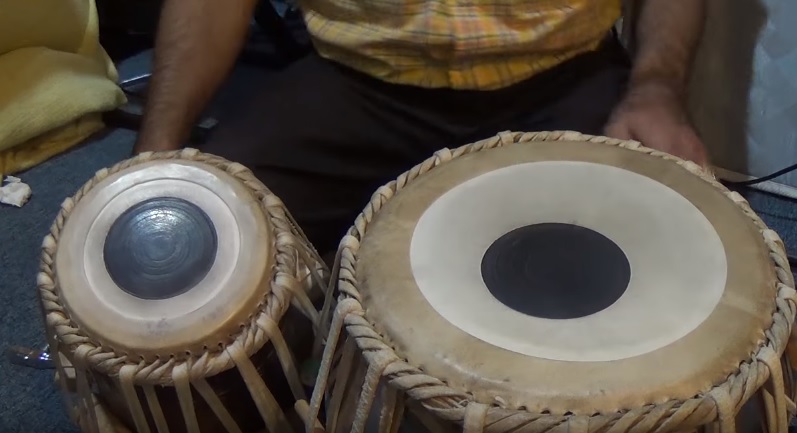Before you conclude, they are not another set of bongos. It is called the Tabla, although it looks like the bongos.
The word TABLA is from the Arabian and the Persian word TABL which means drum. It is a South Asian membranophone, in other words, the tabla mainly produces sound through a vibrating stretched membrane.
The tabla is a flexible musical instrument that is not restricted to one type of music; you can use it in classical, folk, traditional and popular music. The tabla has been in existence since the eighteenth century and it is popular among the Hindustanis.
Furthermore, during kirtan and bhajan singing, the Sikhism and Hinduism use it as one of the instruments in bhakti religious traditions).
The Hindustanis play the tabla in two ways which are Khula bol and Band bol. Don’t get confused with the names; it simply means Khali and Tali in classical music.
Sri Lanka, India, Nepal, Pakistan, and Bangladesh are using this instrument till date. Also, the Sufi musicians in Pakistan, India, and Bangladesh play the Tabla as one of the qawwali instruments.
There have been some arguments about the origin of the Tabla; no one can categorically tell the source of the Tabla. It does not deny the fact that the instrument produces incredible sounds for our pleasure.
Components of Tabla
The tabla has only two elements which are Daya (dahina) which means right and Baya (bahina) which means left.
To identify the daya and the baya is through their distinct sizes; the daya tabla is ten inches high and six inches in diameter while the baya has a kettle shape and it is ten inches high and eight inches in diameter. Both the daya and the baya are made of clay, brass or wood.
How to play the Tabla
Learning how to play the Tabla might seem confusing, however, after the first two practices, you will love it.
You can play the daya or the dahina tabla with your dominant hand; if you are left-handed, you can play the daya with the hand that is easier for you. The daya is tuned to the ground note of the raga called Sa which means tonic in western music.
The daya is fastened on its sides with wooden dowels, thongs, and hoops. These are used to hold the tension of the membrane. Unlike the daya, both the construction and tuning is more or less a fifth to an octave.
Techniques of playing the Tabla
In playing tabla, every part of your hands is important;
Palms & Fingers: To play different sounds and rhythms, the player has to involve the complete use of the palms and fingers in diverse configurations
Hand’s heel: this is used to change the tone and the pitch of the drums.
Benefits of playing the tabla
The tabla is a beautiful instrument with excellent sounds that touch our lives in one way or the other. Amongst other advantages, these are my favorites;
- You understand more of the other culture.
- Tabla helps you to concentrate; to get a perfect rhythm, concentration is the key. Tabla gives you the opportunity to enjoy the moment without thinking about your troubles.
- The joy you feel when playing this instrument is simply awesome, most especially when you are playing with other people too.
- And lastly, you improve with each practice.

